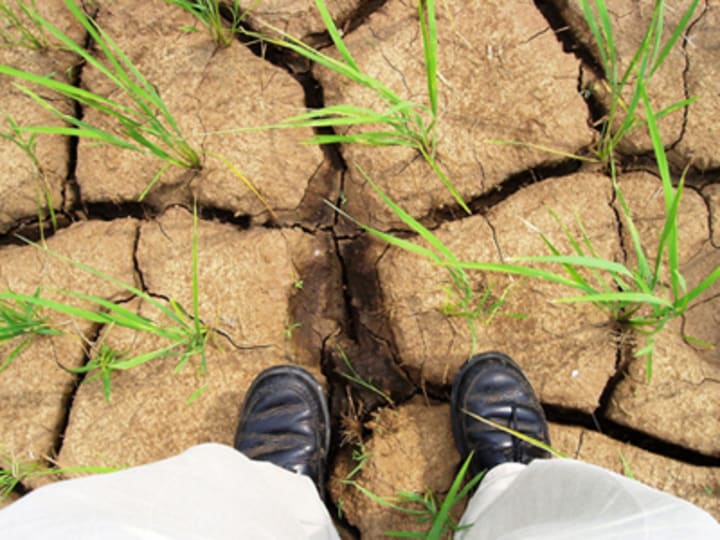
Droughts are deceptive. They are less dramatic than earthquakes and hurricanes, but cause more deaths and displacement than these disasters combined. They creep in slowly, and the response is often too late, too little. Yet, despite our ability to predict drought, only one country in the world — Australia — has a national drought management policy.
It is time for policymakers to do their homework.
Science says the global temperature is on track to rising above 4°C. That means droughts will become even more frequent, prolonged and intense. Lately, we have seen an increasing understanding for a need to shift from crisis management to drought-resilience. But this is not enough. To avoid tens of thousands of deaths, policymakers should start implementing practical solutions already on the table.
In dealing with drought, one can learn from people in Batodi village in Niger. Rainy seasons are short there and droughts are increasingly frequent. To capture scarce rainfall, villagers dug holes they call “zai,” filled them with manure and planted trees on top. What was once barren land turned into vegetable gardens.
On my visit to Batodi in March, a woman told me that 15 years ago she used to walk half a day to find freshwater for her family. Today, she fetches it from the local well. Planted trees kept water from evaporating. As a result, the water level in wells increased by 14 meters. Families can now withstand prolonged droughts and sustain their livelihoods.
This is just one example of a community which understands that the solution to water scarcity and drought-resilience lies in effective land management. We should communicate and scale up such success stories, not wait until the next drought.
But to succeed, Batodi village also required political support. It is crucial that farmers have a sense of security and the motivation to protect and restore their land. Therefore, governments around the world should recognize the land rights of farmers.
Empowering farmers and building their drought-resilience are not just mitigation measures. For all stakeholders — including governments, development organizations and they private sector — it is a smart investment with a guaranteed high return.
This was finally recognized this in March during the High-Level Meeting on National Drought Policy, jointly organized by the UN Convention to Combat Desertification, the World Meteorological Organization and FAO. The meeting marked an important step in the shift from crisis management to risk management and resilience building. The next step is for all drought-prone countries to develop national drought policies. We are ready to assist them with building capacity.
The other crucial step is for donors and governments to shift a greater portion of the post-disaster funding into resilience and early response.
The global population is growing, and demand for food and water may rise by 50 and 30 percent, respectively, by 2030. Each of these demands will claim more land and lead to more deforestation, land degradation and more vulnerability to drought.
Business as usual is no longer an option. Let me be bold — we will not sustainably achieve food security and alleviate poverty until we start avoiding land degradation and restoring already degraded land.
The commitment by world leaders in Rio+20 last June to strive to achieve a land-degradation neutral world was a major breakthrough. But this aspiration needs a strong public backing to be turned into regional, national and global targets.
Policymakers have failed to deal with drought for far too long. It is time to live up to their commitments and make us a truly drought-resilient global society.
Join the Devex community and access more in-depth analysis, breaking news and business advice — and a host of other services — on international development, humanitarian aid and global health.



